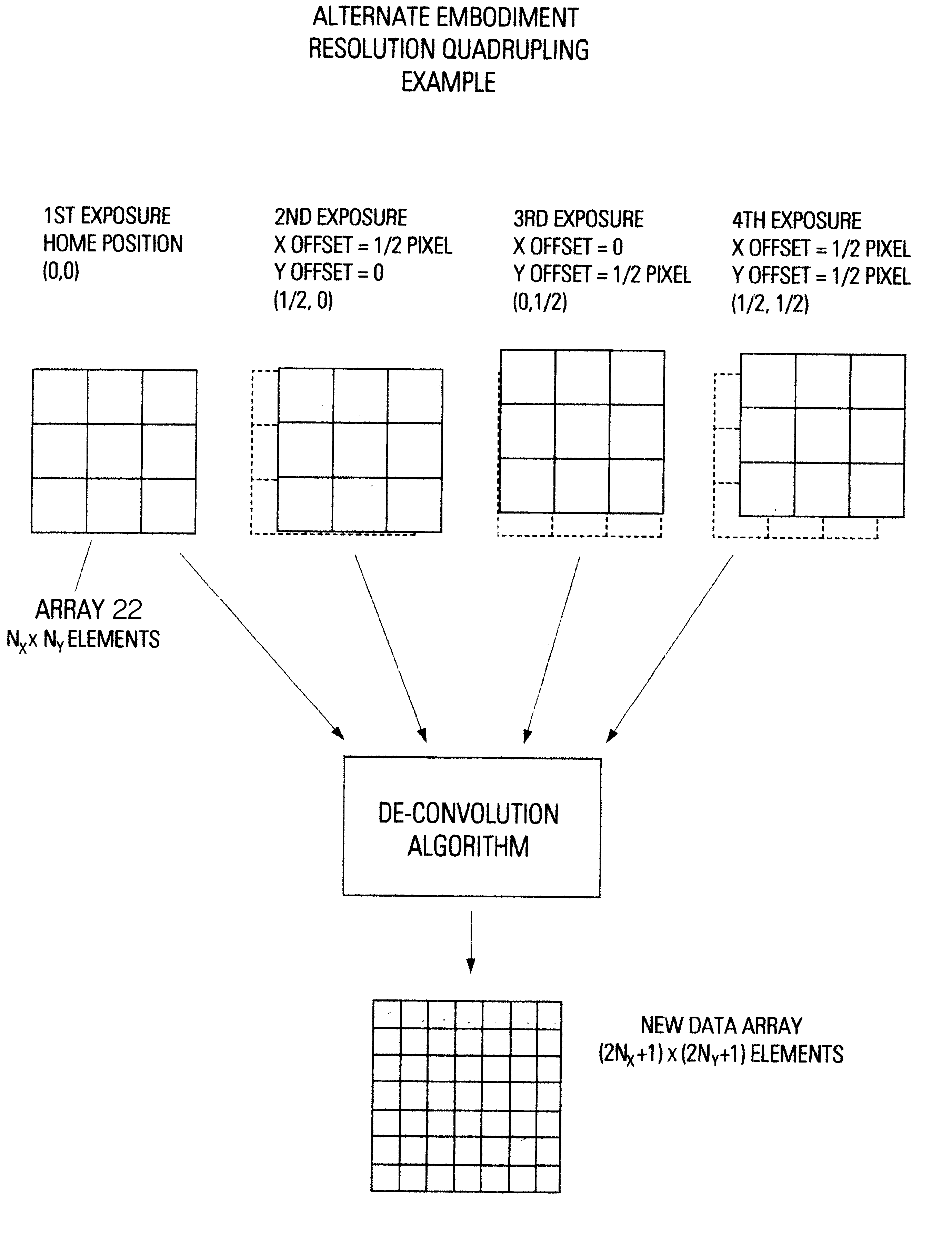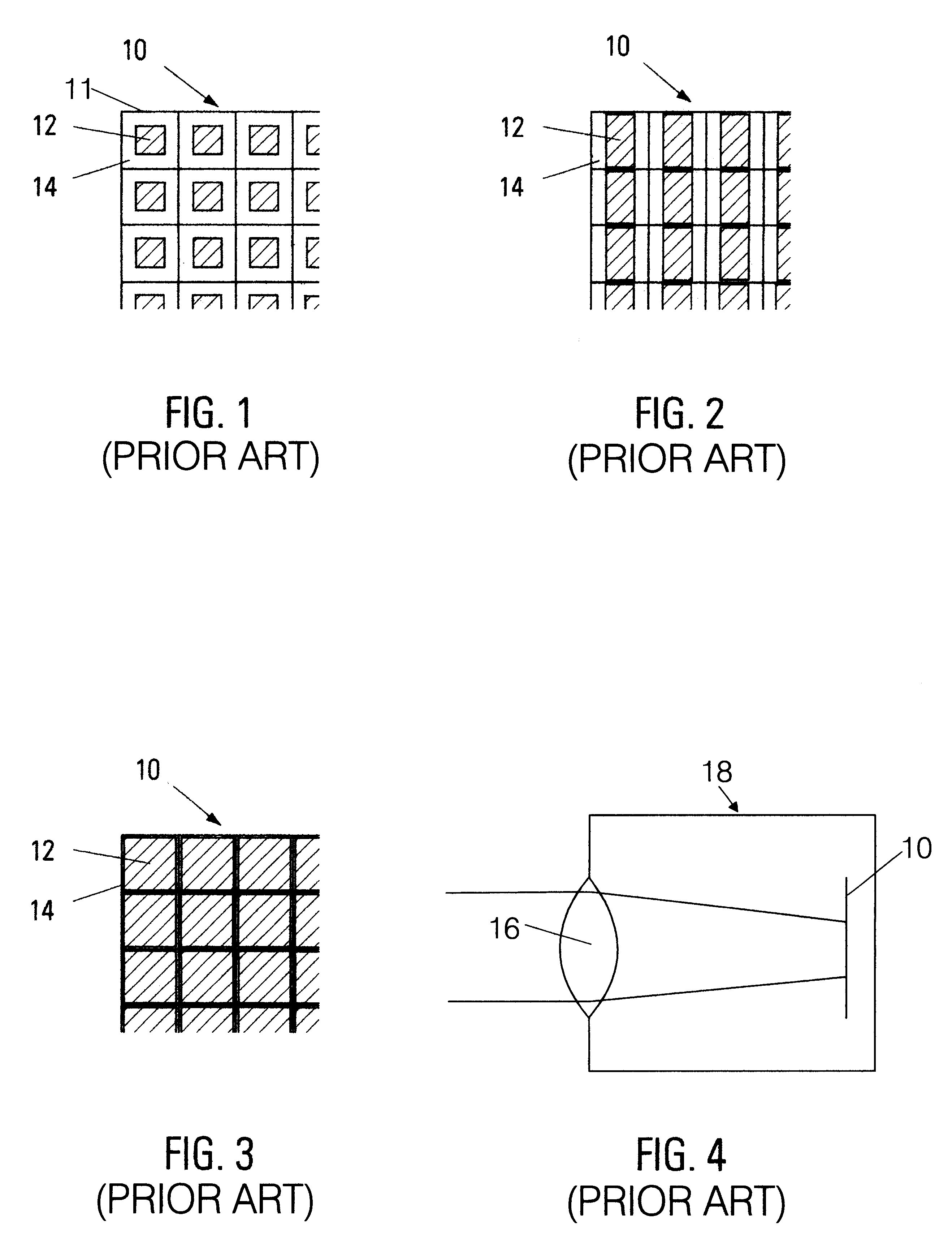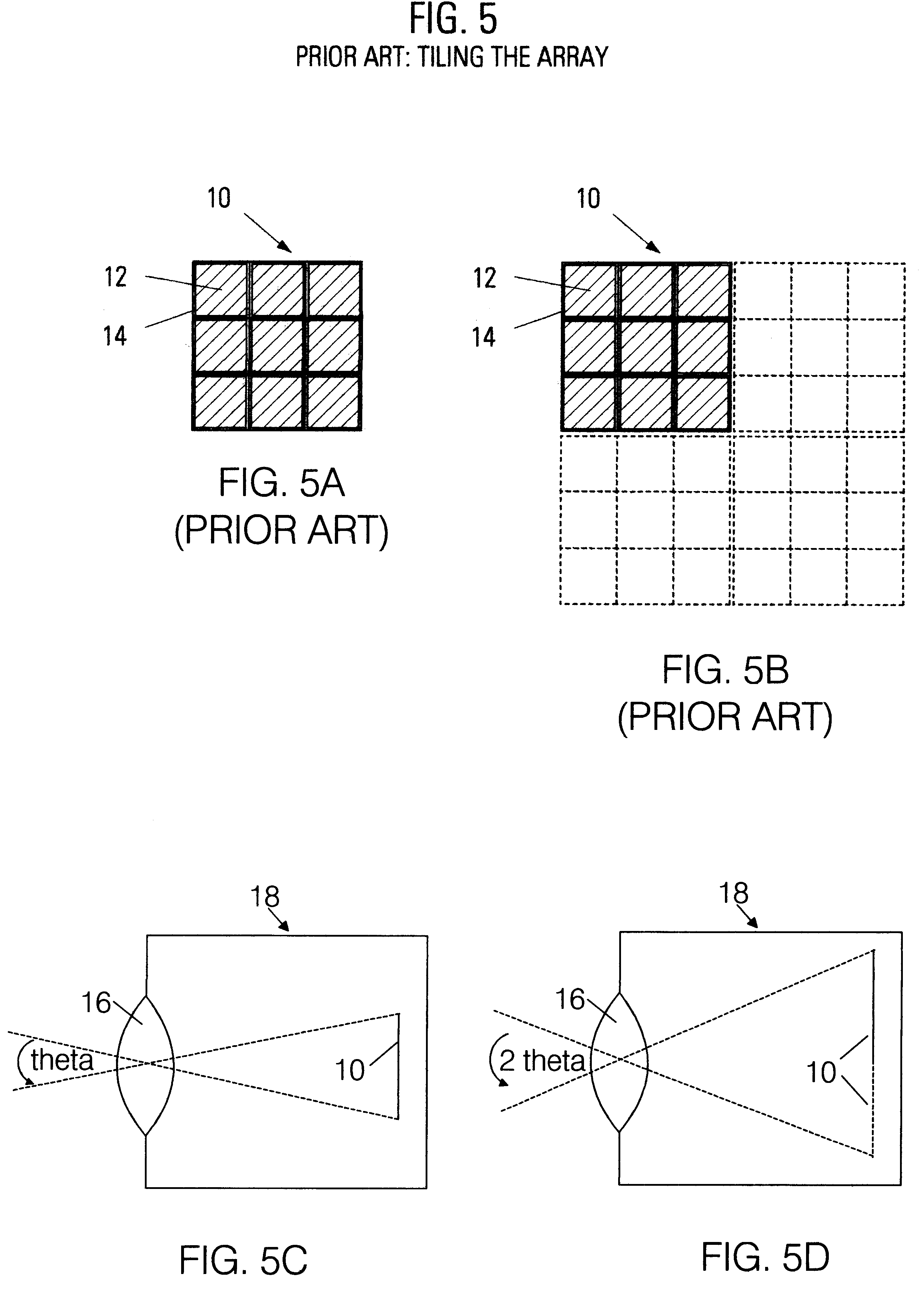Resolution-enhancement method for digital imaging
a technology of resolution enhancement and digital imaging, applied in the field of resolution enhancement of digital imaging, can solve the problems of difficult implementation, ccd is the single most expensive part of the digital camera, and the cost of both types of cameras is considerable, so as to achieve the effect of increasing resolution
- Summary
- Abstract
- Description
- Claims
- Application Information
AI Technical Summary
Benefits of technology
Problems solved by technology
Method used
Image
Examples
Embodiment Construction
Array Movements and Modes
A description of array movements and modes according to the alternate embodiment is shown in FIG. 10. Starting at a home position, a first exposure is taken with the global filter 20 arbitrarily set to red, the order of color being filtered having no bearing on the final outcome. The unfiltered large-aperture-ratio array 22 records the red-filtered scene, and the data is stored according to methods common in the art. Next, array 22 is displaced from the home position a distance laterally (the X direction) equal to one-half the pixel pitch of array 22. Array 22 again records the red-filtered scene and the data is again stored. Next, the array is moved from the home position (0,0) to a position displaced one-half pixel in the Y direction (0,1 / 2), the array 22 is again exposed and the data stored. Finally, the array is displaced by one-half pixel in both the X and Y direction (1 / 2, 1 / 2), again exposed, and the data recorded. The four sets of data produced conta...
PUM
 Login to View More
Login to View More Abstract
Description
Claims
Application Information
 Login to View More
Login to View More - R&D
- Intellectual Property
- Life Sciences
- Materials
- Tech Scout
- Unparalleled Data Quality
- Higher Quality Content
- 60% Fewer Hallucinations
Browse by: Latest US Patents, China's latest patents, Technical Efficacy Thesaurus, Application Domain, Technology Topic, Popular Technical Reports.
© 2025 PatSnap. All rights reserved.Legal|Privacy policy|Modern Slavery Act Transparency Statement|Sitemap|About US| Contact US: help@patsnap.com



